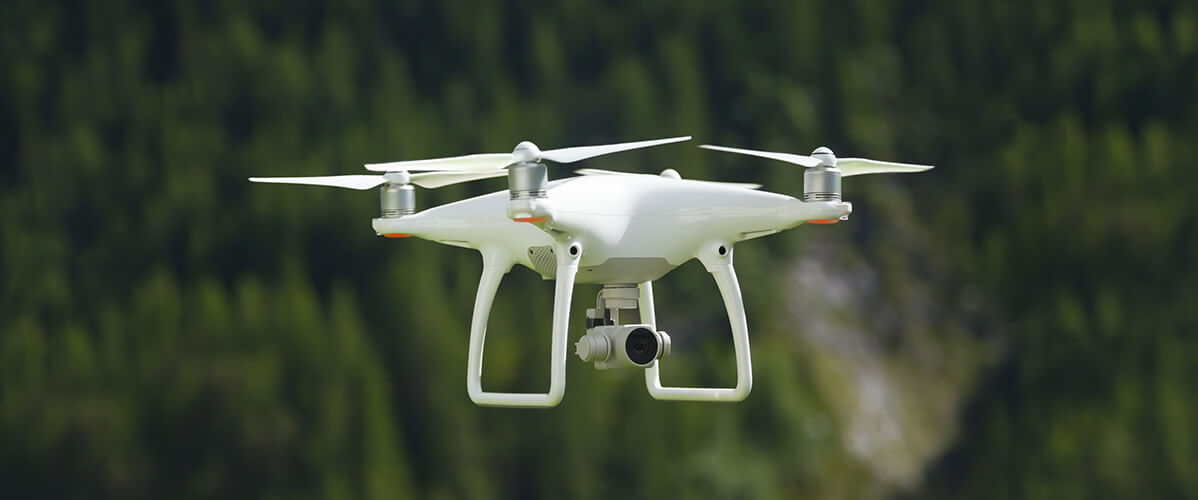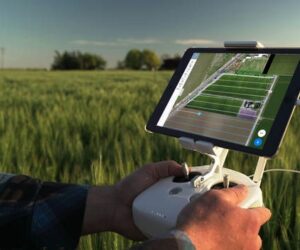
We have heard about “Drones” for a long time now, especially with big companies using them for more efficient deliveries, a major trend in e-commerce. Companies and institutions have adopted drones instead of using local delivery men to drop the package on your doorsteps. However, the true power of drones goes beyond that, as they provide business enterprises with data that are harder to collect. In addition to that, drone data analytics can collect information about anything and everything such as from the health of crops to the thermal leaks in the buildings. Drones are helping professionals and businesses to perform in a better way.
How are Drones used to Collect Data?
Drones are mainly used for storing, transmitting and collecting data, and it allows business enterprises to integrate more and more data into their current processes. Drones are no longer limited to just collecting videos and photos for visualization. Real estate companies often use drones to promote the properties that their companies are selling and appeal to a wider base of buyers. Drones provide great and interesting views of buildings that can make the properties stand out as the top choice. Nowadays, drones have capabilities that can help all sorts of industries. It can gather data about emissions, geodetic information for radio signals, and land surveillance as well. Here are the following ways that drones data analytics are useful in different fields: –
- Drones are often helpful to collect data analytics for Geographic Information Systems (GIS) technology. Geographic Information Systems (GIS) is basically used to analyse locations and visualize maps. For instance, an Orth mosaic photo captured from a drone will be corrected so that it doesn’t include any kind of distortion. This can then become a reliable resource for creating a to-scale map.
- The agricultural industry has also been majorly benefitted from the introduction of drones. Farmers have faced challenges in producing enough food to meet the demand, but the right crop yields can be difficult sometimes. Drones being versatile one can reach places that are harder to access by humans. Farmers can use drone data analytics to survey their land and determine which parts of their land are struggling more due to floods, drought, or other types of intense weather. It can also be used for moisture contents. With the help of drones, farmers can analyse when their crops are struggling and take action to fix the problems right away. Otherwise, by the time they get to know about the problem, it might be too late to save their crops.
- Drone data analytics are valuable for accessing public health threats as well. It has been used in aiding disaster recovery by searching for the victims and appraising damages, using not just video but thermography to find the hot spots, and searching for the danger that cannot be spotted on the ground or in conditions that are too hazardous for human beings.
- Drones are useful for thermal imaging or thermography as well. Thermal Imaging is when a video camera captures and detects the radiation problem. Maintenance and construction professionals rely on this type of data to realize and determine if there are any leaks in thermal insulation. Drone data analyses and helps the thermal insulation industries to create more efficient buildings and troubleshoot the problems more accurately. It can also be possible that drones will become a more standard way of doing building inspections, and the industries won’t have to place the need for manual inspections, they will only be needed if there is a need for taking a closer look.
Benefits of Drone Data Analytics
There are certain benefits of Drone Data Analytics. Enlisting below are the various benefits of drone data analytics: –
- It improves safety and efficiency: – With the help of drone data analytics, inspection for any kind of certain problems can be accomplished in a matter of minutes rather than putting a person’s life in danger by sending them for inspection in dangerous places. Drones can be used in any areas that are too difficult to access for ground patrols. Even you can get a clean look at any problems that may occur, and your team will be able to properly diagnose the problem and suggest a solution before you leave the site. This also increases your team’s efficiency and allows them to accomplish more work in less time.
- It is Highly accurate: – In an experiment done by researchers, it was concluded that the results and data sent out from a drone is 99 percent fast and accurate. Moreover, the manual inspection can take two days to inspect in certain areas whereas the drones can inspect those areas in just two hours.
- It can be Manipulated for Analysis: – Drone data analytics can easily and quickly be manipulated and analysed from different angles. For instance, with a single drone mission, an organization can gather data that provides the exact shading conditions of a site at any time of the year. Drone data analytics allows users to overlay the actual imagery of the site to proceed according to specifications.
- It enhances security: – Every time a new data is introduced in a business, it also comes with a lot of privacy risks, and the security has to be reliable across all times. Hence, the services that a drone provides have the cloud that will transmit the important data of your businesses.
Conclusion
Drone data analysis has taken over the world in a very positive way. The data that drones analyse and collect improves the process of data scientists and businesses in an organization. We have plenty of evidence that drones are a useful factor that is increasing the widely used technology for collecting operational and spatial data in support of humanitarian operations. Hence, it can be said that the future of drone data analytics will actually be shaped by practical commercial applications, because of their ability to data analytics and drive efficiency in an organization and industry.
